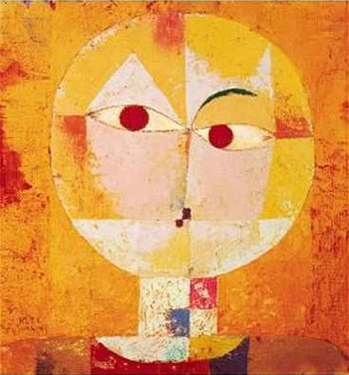
Head of Man Going Senilealso known as Senecio

|
The importance of Paul Klee's career to 20th-century art would be difficult to understate. Klee anticipated Surrealism, and was a key precursor of post-modernism. He was incredibly prolific, working in numerous styles and producing thousands of works of art. He was a giant of art.
It is ironic, then, that Klee does not have any one masterpiece, a particular painting that propelled him to fame or made for an instantly-recognizable image. Klee, in fact, didn't want to produce such a thing; he was far more interested in the evolution of his work over time. For him, his entire career should be the masterpiece, every piece of art having its place in a bigger picture to be taken as a whole. Head of Man is, in this sense, a fine example of Klee's art: it is indicative of the period he painted it in, as well as themes that he explored throughout his career.
Head of Man was painted during what is called Klee's Bauhaus period. In 1919, Klee was invited to teach at the Bauhaus, in Weimar, then the capital of Germany; he taught there from 1920-1931, in which time he consistently produced excellent art. It was during this period that he began to experiment more with color, eventually obtaining a virtually complete mastery of it. Indeed, the most interesting aspect of Head of Man is the color. The variations of color in the head itself form interesting contrasts to each other, and as a whole they contrast subtly with the orange background. The red of the eyes, despite not being a dissimilar hue to parts of the head or the background, still jump out at the viewer with a remarkable intensity.
The simple, flat construction reflects an interest that fascinated Klee for years: child-like expression. He routinely incorporated childlike influences into his art. He felt that human development is most universal across cultures in childhood; therefore, the self-expression of a child is more pure, closer to the essence of the idea.












